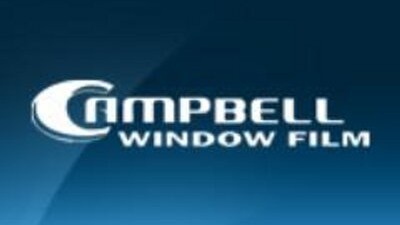CBRE, Presented With Clear Solution, Engages Campbell Window Film To Tint 11k SF Of Glass
CBRE Global Investors recently engaged Campbell Window Film for extensive window tinting to enhance the architectural gem the CRE services firm acquired in 2012. The 26-story building at 400 South Hope St, built in 1982, encompasses an entire city block and boasts more than 700k SF of Class-A office space. In a tiered mezzanine configuration with huge sloped skylights, the CBRE space (below) provides spectacular views of the LA area—the only problem was those same massive skylights that made the space uniquely appealing also rendered it a greenhouse with bad glare.

“Previous tenants told us that it wasn’t the most comfortable space,” says CBRE director of operations John Bonomo. “First, there was massive heat gain through the skylights. Second, there was a huge issue with glare.” One previous tenant had gone so far as to use umbrellas in an effort to reduce the effect of all the direct sunlight.
CBRE has frequently deployed a product specifically designed to address this issue, 3M Window Film. “We’ve done a number of projects for CBRE over the years,” said Campbell Window Film CEO Brad Campbell. “The company understands that window film offers the easiest, no-maintenance solution for rejecting heat, blocking glare and preserving the building’s aesthetics.”
One of the project’s challenges was the size of the skylights. With roughly 11k SF of glass, installation necessitated erecting immense scaffolding that took a week to construct and a week to tear down after the project’s completion. Once the scaffolding was in place, Campbell’s installers took a week to apply the film, ultimately giving CBRE a cooler, more inhabitable space.

3M Thinsulate Window Film reduces solar heat gain and creates an immediate impact on energy usage, Brad says. The long-term reduction in HVAC maintenance costs may even delay or eliminate the need to replace a building’s HVAC systems.
Window tinting blocks up to 83% of the sun’s heat by causing it to bounce off the glass and away from the building. This can translate into a savings of one ton of air conditioning per 100 SF of filmed glass. With a reduced heat load, the HVAC equipment works more efficiently and at a lower overall energy cost.

In the winter months, window tinting plays a reverse role, helping retain interior heat and reducing heating costs up to 30%. Finally, the technology filters out 99.9% of harmful rays to dramatically reduce fading. Since ultraviolet rays can create considerable damage on a building’s interior furnishings, wood, carpet and artwork, window tinting will prolong the furnishing life cycle and save property managers replacement trouble and costs, Brad says.
To learn more about Campbell Window Film, click here, or join the team at the 4th Annual Building Technology Showcase on Aug. 26.

